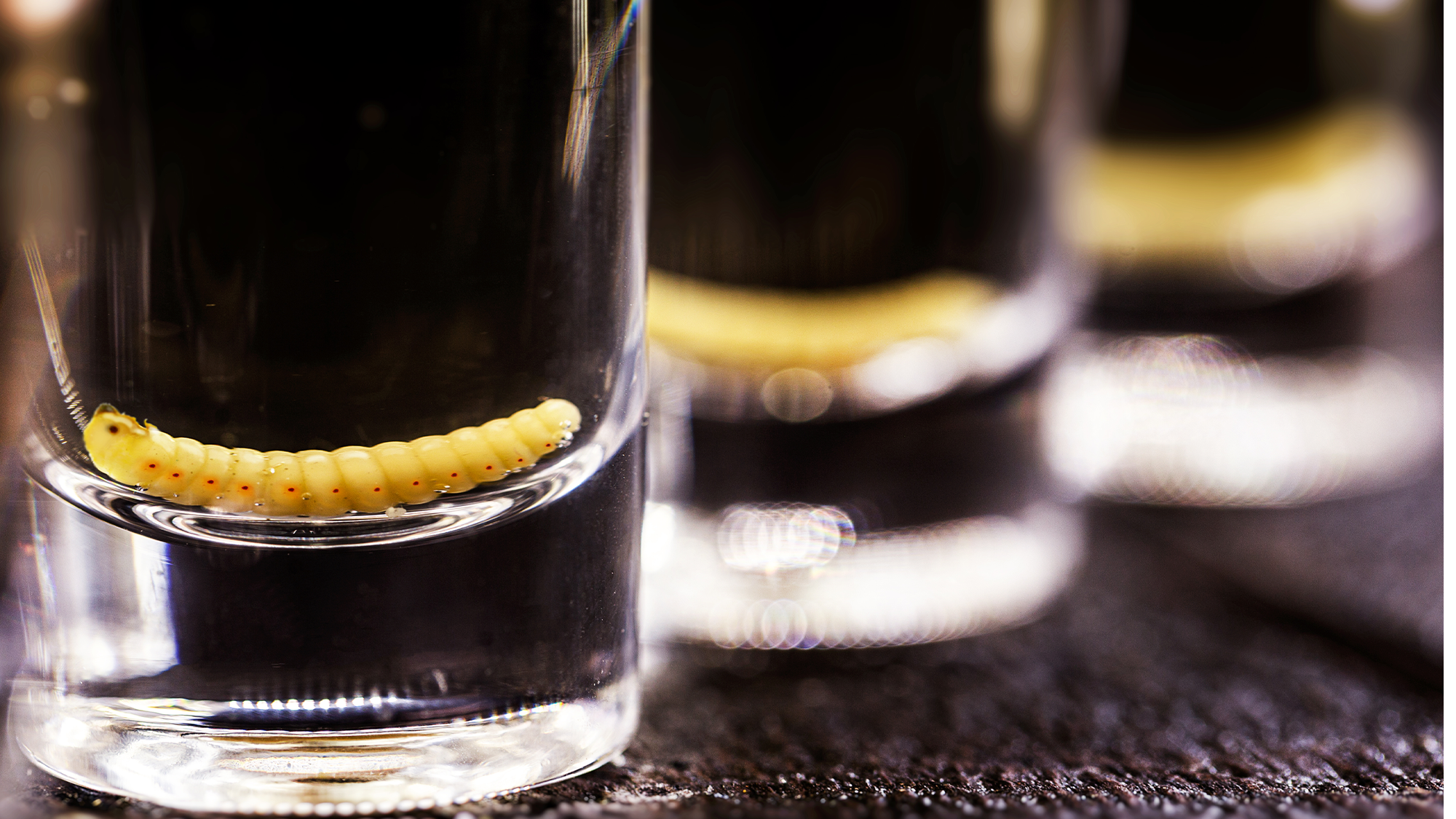

If you’ve ever been to a fancy tequila bar, you may have hear of an alcoholic drink distilled from agave called mezcal. The smoky-tasting dram is surging in popularity around the world— it’s estimated that the global sales for the beverage will jump from $338 million in 2022 to $2115 million by 2031. Around 70 percent of all mezcal is distilled in the southwestern state of Oaxaca, Mexico. One thing that separates mezcal from the other bottles of hard liquor on the shelf are the worms commonly found inside them.
[Related: City lights could trigger a baby boom for some moths and butterflies.]
There are some theories as to why the worm is there, especially since they appear to be a relatively recent addition to the drink that dates back to the 17th century. Indigenous Mexicans have been adding larvae to food for ages, but one theory posits that Jacobo Lozano Páez, a distiller who found that adding the creature changed the taste of the agave and began adding it to his spirits in 1940. Some other popular theories center around the belief that the larva brings good luck to the person who finds it in a glass, and a study from 2013 found that adding larvae to is mostly driven by the belief that the larva are healthy and are aphrodisiacs.
In a small study published March 8 in the journal PeerJ Life & Environment, a team of researchers from the United States, Canada, and Switzerland looked to identify what species of larva are found in bottles of mezcal. They wanted to see if drinkers were consuming the larvae of the aptly nicknamed tequila giant skipper butterfly (Aegiale hesperiaris), the moth Comadia redtenbacheri, a weevil, or a completely unidentified insect species.
The results were somewhat surprising. All of the larvae in the specimens obtained from 21 commercially available mezcals purchased between 2018 and 2022 were from the moth C. redtenbacheri, despite about 63 species of larvae being widely consumed in Mexico.
The team used DNA analysis of larvae to determine their identity. Additionally, all of the larvae appeared very similar on the surface, with prolegs and a distinct head capsule. They also variety from pinkish red to white in color.
[Related: Five burning questions about tequila, answered.]
In response to a declining number of larvae available to add to mezcal, the team in this study believes that new cultivation methods for larvae in captivity are needed. researchers have begun to develop methods to cultivate these larvae in captivity, but that can be a challenge.
“There is still very little known about how best to rear mezcal larvae and additional scientific research is needed to understand how captive insect breeding can become a central part of the agricultural industry in Mexico,” the team writes in the study.
